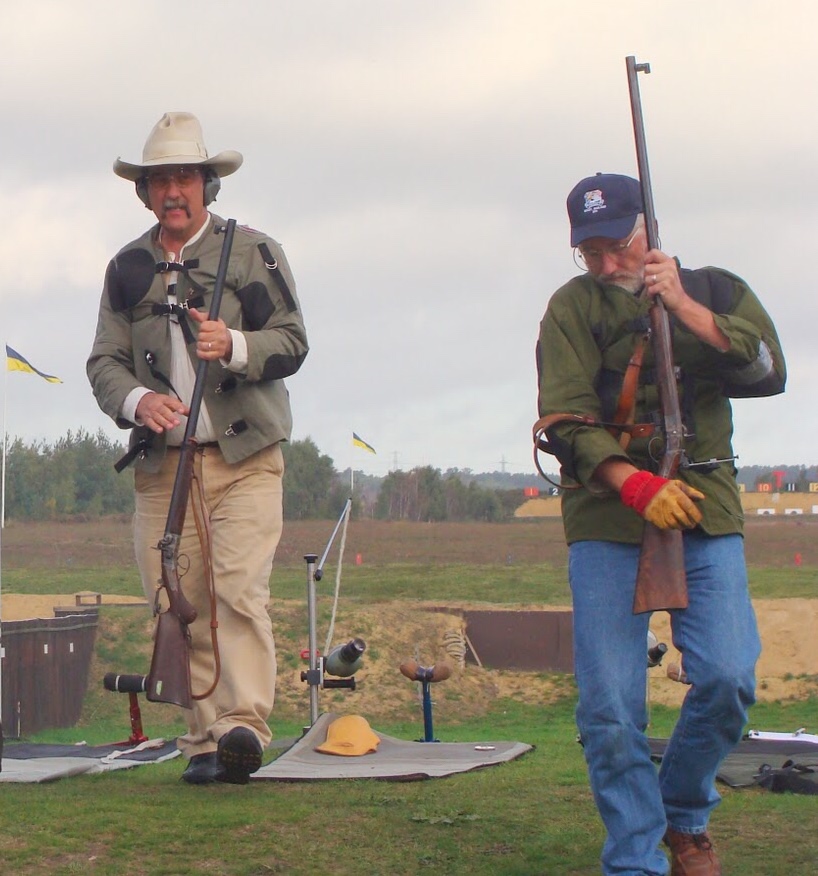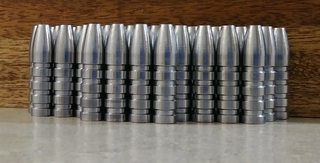Idaholewis
Active Member
When I was testing 4831 and some other slower powders they were 90% to compressed if I remember right. I never used any filler with these.
That’s what i was hoping to hear!
When I was testing 4831 and some other slower powders they were 90% to compressed if I remember right. I never used any filler with these.
Forget the 311322 for high velocity. Or don't, and do some load workups from 1500 fps with Unique through 2600 fps with H414 and a few in between and discover for yourself. That might be better because it will get you asking a lot of questions that will help you understand all these things we've been telling you.
What you want to do for high velocity, long range cast is use jacketed bullet data for the same bullet weight, and tend toward the slower powders listed (not always, but "tend").
I do not know of a current iron mould design suitable for your purposes. Possibly the Lyman 311644. We all have our preferences in things but having been there and done that I can tell you this will be a lot easier for you if you compromise on this one and focus on the bullet designs we have been recommending instead of the material.
Very impressive.

I am not trying to be hard headed, i just DESPISE Aluminum Molds, and try to AVOID them.
Is high Velocity a Mandatory thing for Longer ranges? We are shooting 530-540 Grain Bullets at a mere 1300 fps to 1,000 Yards in These Muzzleloaders. They Shoot the Same Loads in BPCR (Black Powder Cartridge Rifle) to 1 Mile, 1,760 Yards
With your black powder bullets of 500+ grains you have a lot of momentum going for you. Get a bullet that heavy going 1300 fps and it simply doesn't slow down nearly as fast as a far lighter say 30 cal. bullet with far less momentum will. Part of the reason your heavy black powder bullets are so effective on game, the momentum of that much mass just doesn't want to stop.

Holy crap. How long are the new nipples lasting?
This is about as far from JW and his flintlocks as you can be. Both are equally impressive for their own reasons.
Lewis, you have to realize that comparing large bore muzzle loaders to say a 165-grain cast .308 bullet at long range is like apples and hand grenades.
Lewis, you have to realize that comparing large bore muzzle loaders to say a 165-grain cast .308 bullet at long range is like apples and hand grenades.
The same difference between the large bore and 15-twist 9mm muzzle-loaders you'll see again between the 9mm and cast in a .308 Winchester. One of the biggest challenges to shooting cast bullets from fixed ammunition is the fixed ammunition part. So many factors come into play that you do not have to account for with the front-stuffers. This is why bullet design and throat shape, together with an understanding of the nature of ternary lead alloys, pressure curves, and what we can group under the umbrella of "loading techniques" are critical factors to success.
It's relatively easy to take a gas-checked, two-diameter Barlow bullet, stuff it in a .308 case that has only been prepared with a partial-size using a FL die and the neck expanded with an M-die, out in 16 grains of 2400, and shoot MOA at 100 yards at 1700 fps. Anything more than that requires a bit more attention.
